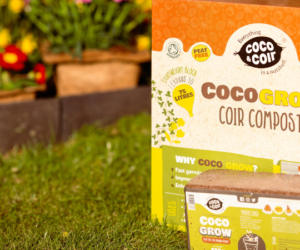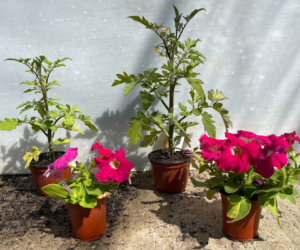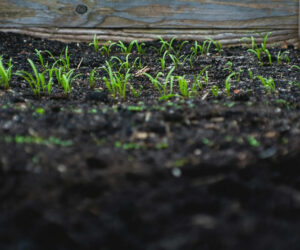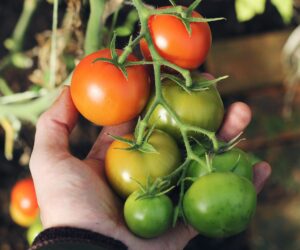What should I grow in my greenhouse?
Why are greenhouses good for plants?
Most plants, especially those requiring certain climates or conditions, thrive in greenhouses. With optimal conditions, plants can produce fruit or flowers in abundance.
Greenhouses afford greater control over temperature and climate. Sunlight and heat are contained by the structure, and plants are protected from adverse weather. Water intake can also be better monitored and controlled.
These conditions can facilitate growing conditions throughout the year. Often people will turn their greenhouses into incubators and nurseries for seeds to plant out during the next growing season.
Greenhouse growing top tips
Soil maintenance
Without rainfall, watering is solely down to the gardener. Plants that need a smaller volume or more regular supply of water are easier to maintain.
In a greenhouse, the soil will likely stay damp for longer due to increased humidity. Therefore, it’s important to keep an eye on root health.
Coco Coir Mulch can be used to suppress weeds, but be careful not to stifle growing plants. Staked plants with high water intake, such as aubergine, benefit from extra insulation.
Mulch maintains soil temperature and protects from frost in colder months.
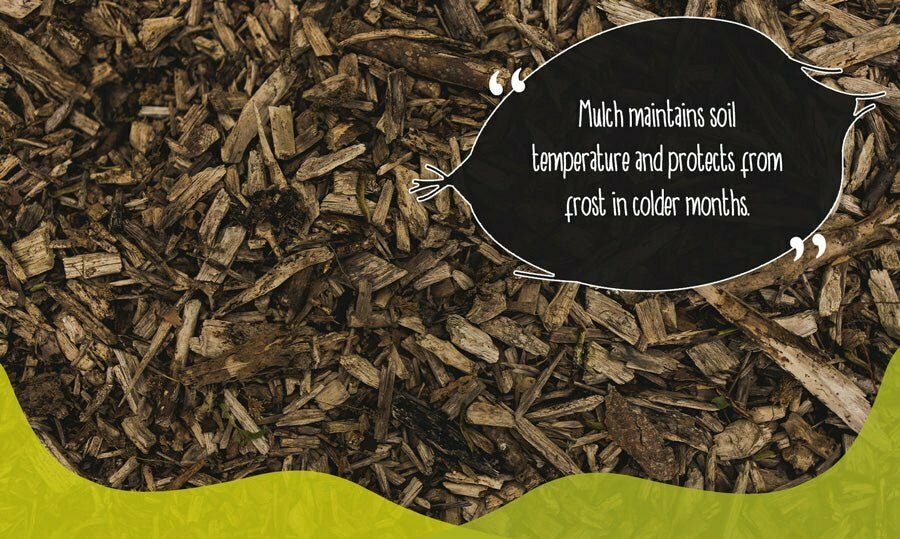
Monitor conditions
Structure greenhouse planting around the amount of light needed. Plants that prefer partial or full shade and lots of moisture should be stored out of direct sunlight, perhaps underneath shelving. Those that thrive with plenty of direct sun can occupy the top shelves or exposed places.
Some plants scorch if exposed to too much sunlight. Consider misting areas of clear greenhouse panes to filter sunlight and reduce harshness. Lining with fleecing or bubble wrap helps to insulate in colder months.
Monitor humidity levels depending on what’s growing in the greenhouse. Some plants, like tomatoes, are susceptible to fungus in overly humid conditions.
Allow more airflow if growing plants prone to mould.
Vegetables to grow in a greenhouse
Most vegetables can be cultivated in a greenhouse under the correct conditions.
Carrots and other root vegetables grow well in moist soil in a greenhouse almost year-round.
Onions are especially hardy, making them a good beginner plant. They tolerate cooler climates, and can grow in winter.
Asparagus can be planted in deep containers or trench-style planting, according to available space. It can continuously produce for years if not overharvested.
Plant it in nutrient-rich soil, being mindful to avoid competition from other plants. Leave smaller spears unpicked for a thriving crop.
Spinach, lettuce, and other leafy vegetables prefer full sun and well-drained, relatively cool soil. They grow well in cooler greenhouses too.
Kale is another good beginner plant as it’s low maintenance and hardy. Pick lower leaves first to maintain a continuous supply.

Fruit to grow in a greenhouse
The extra warmth and light captured by greenhouses means fruit from warmer climates can be grown. Some fruit can be grown year-round.
Tomatoes and strawberries thrive in well-drained, nutrient rich coco coir soil with extra protection from pests and adverse weather.
Raspberries can be grown during cooler months, before cherries, grapes, and melons in the summer, even in the UK.
Melons need warmth, sunlight, and humidity. Grow them in a separate area from plants like tomatoes that need more airflow.
Peppers need moist soil and a regular water supply, making them perfect for greenhouse planting.
Other tender produce, like chillies, cucumbers, and aubergines, also thrive in the protected, controlled greenhouse environment.
Greenhouses should be kept pest-free, but access for pollinators like bees and moths is essential for high-yield, healthy fruiting, and bountiful flowering.
Herbs to grow in greenhouses
Most herbs grown outside can be grown in a greenhouse. Fragrant herbs like dill can be planted as companion plants to cucumber, melon, and lettuce, to keep pests away.
Tarragon, cumin and anise are herbs that prefer full sunlight, growing well on the top shelf of a greenhouse.
Basil, rosemary and sage will grow better in well-drained soil with less direct sunlight.
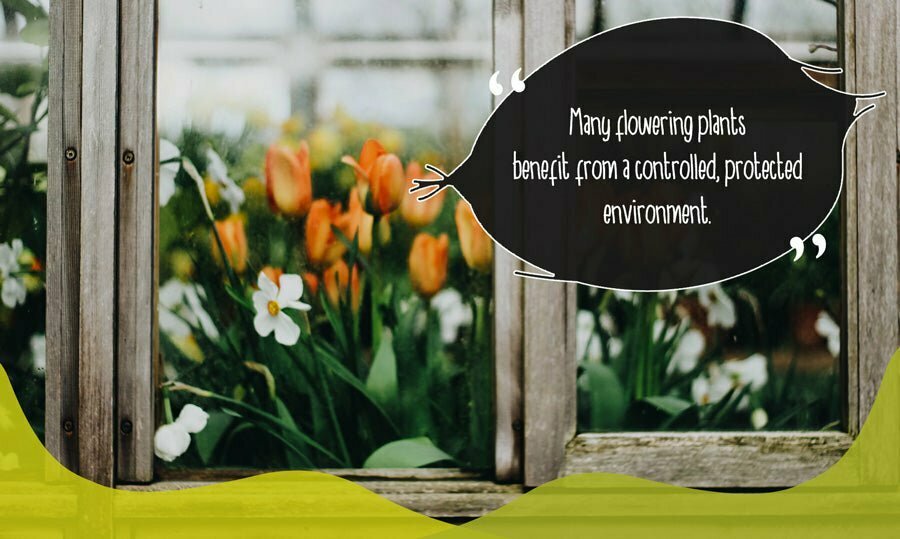
Flowers to grow in greenhouses
From hardy perennials to tender annuals, many flowering plants benefit from a controlled, protected environment.
Perennials such as begonias, sunflowers, and daisies can bring consistent colour if cared for properly in a greenhouse.
Tender annuals like cosmos, salvias, zinnias or tithonia bring a pop of seasonal colour that can last longer while protected.
African violets are one of the best things to grow in a greenhouse, preferring lots of indirect sunlight, moist soil, and a warm climate. They can flower multiple times, even in winter months. Using a slow release NPK potting compost like Coco Boost can help
Potting mix for greenhouse plants
Increased humidity in greenhouses makes suitable soil necessary. A water retentive, well-draining growing medium that doesn’t harbour pests or diseases, like coco coir, is the best way to give greenhouse plants a healthy start.
Mix organic matter or use a nutrient pre-mix to provide plants with everything necessary for healthy growth. Coco peat retains nutrients and moisture better than ordinary soil, making it an ideal substrate.
At Coco & Coir, our product range is manufactured to the highest standards, giving your plants and the environment the best chance. Check out our complete collection of eco-friendly coco coir compost and productive soil alternatives on offer in our online store.


